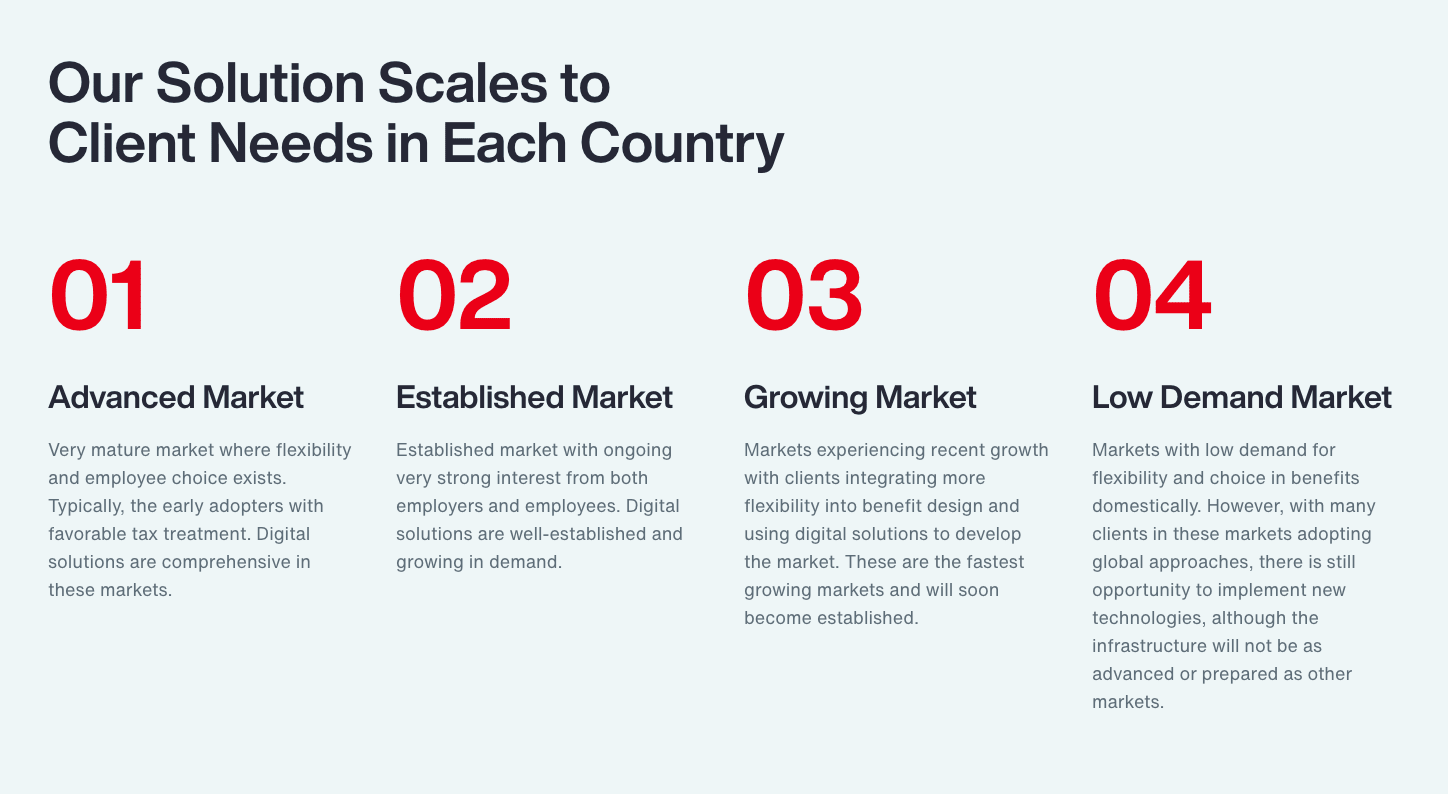
Here's how to customise your benefits package to meet your D&I goals

This article was produced in partnership with Aon
Aon plc (NYSE: AON) exists to shape decisions for the better — to protect and enrich the lives of people around the world. Our colleagues provide our clients in over 120 countries and sovereignties with advice and solutions that give them the clarity and confidence to make better decisions to protect and grow their business. Aon’s clients include major corporates, consultants and associations, as well as micro, small and medium businesses, government bodies and private individuals.
Many employees and job candidates want to know companies are serious about their stated diversity, equity, inclusion and belonging (DEIB) values and goals. According to Aon’s 2022-2023 Global Wellbeing Survey, 80 percent of organizations think about DEIB, among other issues like health and safety, when it comes to employee wellbeing.
An important way for employers to show their commitment to these topics and avoid the risk of losing talent is through the personalization of benefit programs. As competition for talent continues, aligning benefits with DEIB goals can ensure that a more diverse workforce feels a greater sense of belonging and inclusion.
“We are receiving a high volume of inquiries about how companies can design their total rewards to be more inclusive in supporting the greater diversity of today’s workforce needs. It’s really an urgent priority as our clients refine their approach and respond to new trends and legislation,” says Andrew Krawczyk, commercial leader for Aon’s Health Solutions practice in Europe, the Middle East and Africa.
“With this increased focus, and the modern analytical tools and capabilities at our disposal, we are well-positioned to assist these companies to make more informed decisions that will help meet these diverse workforce needs. Clients are seeking validation using modern perception studies and neuroscience technology to ensure employee views are being increasingly factored into decision making.”
The challenge is that diversity covers a lot of ground. As companies continue to integrate DEIB into their benefit plan design, it’s critical to think holistically about the personalized options available and the technology needed to achieve them.
With a growing focus on DEIB, many companies are ramping up efforts to ensure they have the functionality within their benefit program to support a wide range of employees. This starts with identifying the company’s benefit framework centrally. There are numerous approaches to meet the wide range of people within an organization when it comes to choosing benefit options. What do employees want and need in that particular organization? Are these goals realistic? Start with a focus on principles, objectives, levels of intended flexibility, and approaches to branding and communication.
Once these are established, consider the mechanics for offering more flexibility within the organization, and evaluate market expectations and available vendors, if needed.
After successfully determining a set of principles for their benefit design — the level of flexibility, what kinds of benefits they offer and what goals to reinforce — companies can start to use that framework to drill down locally. Diverse work cultures even exist within companies in the same country — and in some cases, one city alone. That’s why understanding the local market and needs of your employees is so important.
There are significant differences in what can be done at a local level, including these three main levels of inputs:

Measuring wellbeing is one effective way to help employers gain a baseline understanding of their workforce perspectives and needs. Tools like Reflection, Aon’s next generation employee listening technology, allow HR leaders to accurately know where an individual, team and organization as a whole stand on their benefit journey. Reflection uses neurotechnology to bypass conscious bias and tune into employees’ wants and needs on a much deeper level. Unlike traditional surveys, this form of data gathering is unbiased and provides an unfiltered view of what employees really think and feel, enabling better employee outcomes. The positive impact can be seen in areas like attrition, productivity, engagement and talent attraction, and ultimately supports further DEIB efforts.
Employers in the current market need to create a personalized experience that connects employees to the firm’s employee value proposition through wellbeing initiatives, benefits and total rewards.
Benefit technology tools like Aon’s The Benefits Solution (TBS), available to clients in more than 90 countries around the world, can also serve as a key driver of employee engagement and data-based decisions. These platforms are highly customizable. They can be set up with variance to account for differences at the country, employee type and individual employee level. This allows companies to effectively deliver their benefit strategy, while gathering data insights to power future decisions, both globally and locally.
The right platform will also customize benefit enrollment and voluntary benefit options for global and local offerings, presenting them in an easy-to-understand and easy-to-access way. Technology can even recommend options during enrollment periods based on past preferences.
From advanced markets to low demand markets, the innovative capabilities of tools like TBS help capture and leverage localized data to determine the right solutions for each region.

As pushes toward DEIB create more diverse workforces with more diverse needs, cutting through the noise and developing a highly effective benefit plan can only be done with the right data, analysis, expertise and technology.
“The leading organizations in the benefits arena will not stop at a well-designed once-a-year benefit strategy to fit DEIB values and goals,” says Terry Gostelow, health and benefits principal in Aon’s Health Solutions practice in the United Kingdom.
“They’ll leverage real-time data to continuously evolve a platform-enabled ecosystem that adds value to their employees.”
Talk to Aon to learn more about Aon’s The Benefits Solution and how it can boost your diverse workforce.